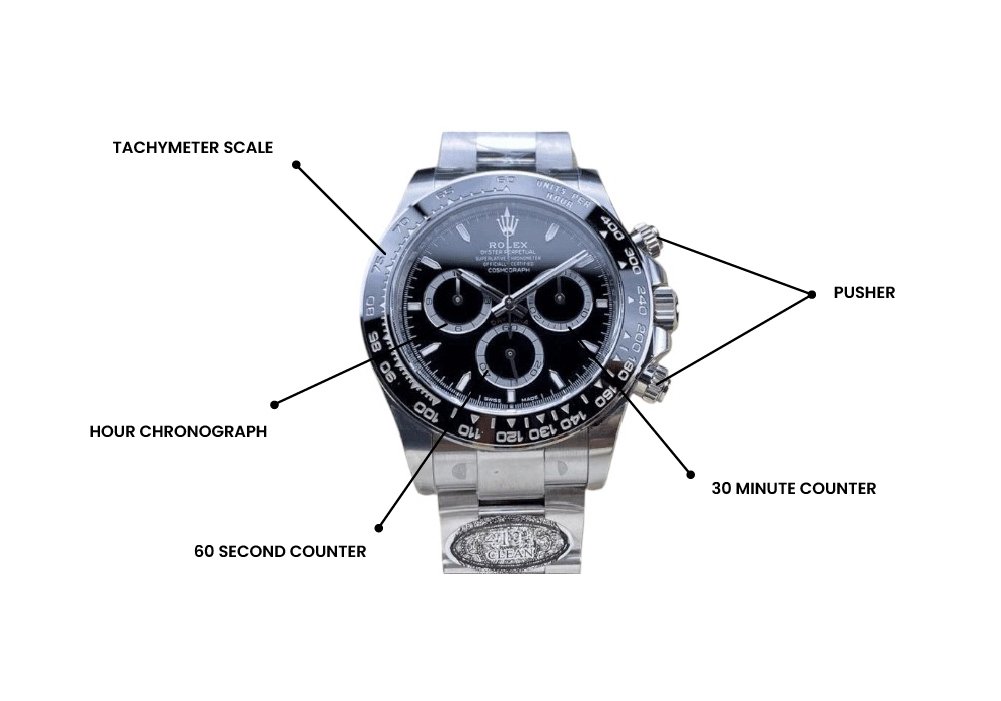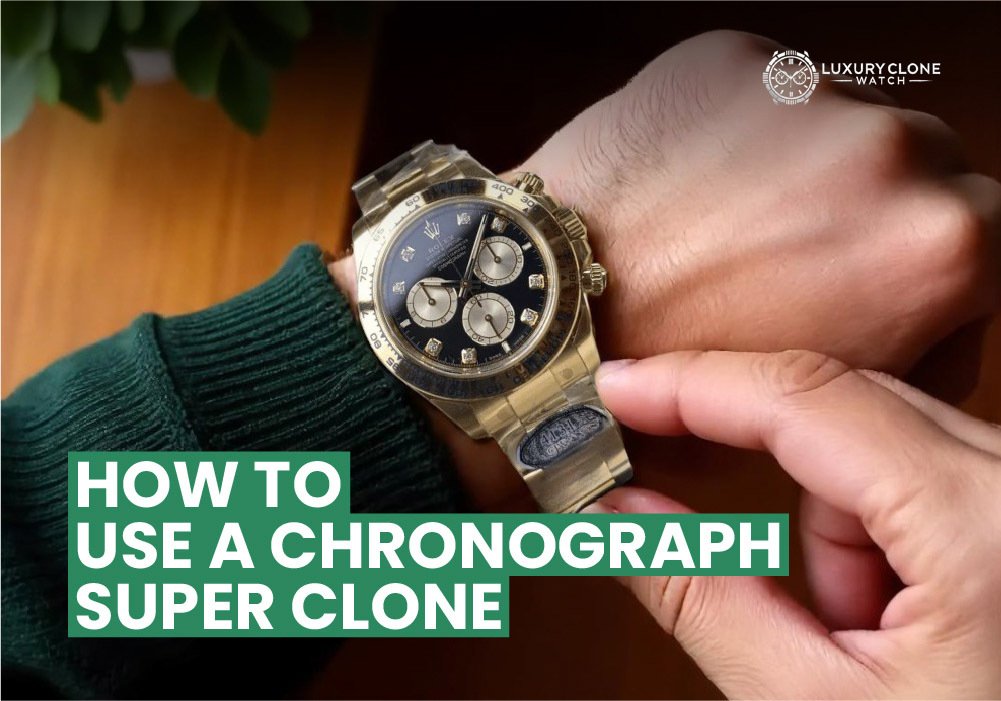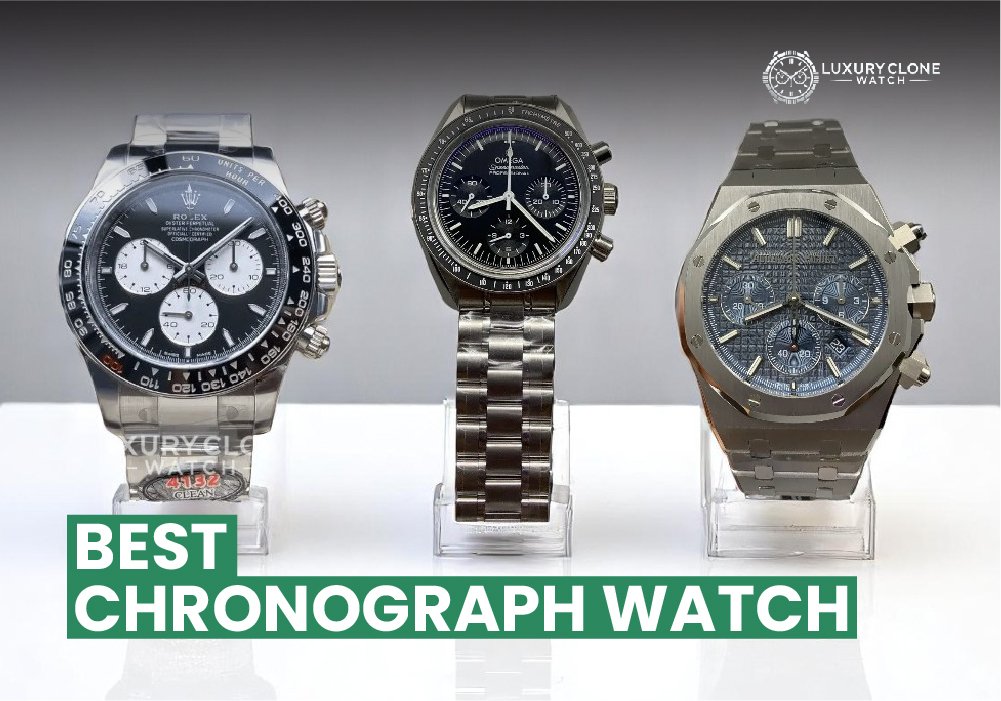Ever looked at a watch, or more precisely, a super clone watch with a bunch of extra dials and buttons, and thought, what does it mean? How do they work? While every watch tells time, the best chronograph watch does so much more – it’s like a miniature stopwatch, a speed calculator, and even a heartbeat monitor on your wrist.
Many chronograph owners only use their sporty and beautiful timepieces to tell the hour and minute, completely missing out on the incredible functionality packed within. While the functionalities are not ones you use every day, they add a level of sophistication and utility that luxury super clone watch enthusiasts appreciate.
In this guide, we will walk you through everything, from basic functions like starting and stopping to understanding the cool scales, such as the tachymeter. Read on to transform your chronograph from a stylish accessory into a truly versatile tool.
The Working of All Those Dials and Buttons on a Chronograph Watch
These watches seem a little technical at first, but once you have understood what each button and dial does, it all starts to make some sense. Let’s start with the basics.

Like every watch, at the heart of this piece, there is the main dial. The main display does its traditional job: telling the time (hours, minutes, and running seconds). Within the main dial are 2 or 3 sub-dials, AKA registers. The sub-dials are instrumental in exactly measuring duration, enhancing functionality, and providing chronographs with their signature sport-luxury looks.
Typically, the most common register configuration of sub-dials is:
- 60-Second Sub-Dial: Records seconds when the chronograph is running
- 30/60-minute counter: Recording elapsed time in 30- or 60-minute segments
- 12-hour counter: Allows you to measure events that have a duration of up to 12 hours.
A chronograph super clone watch typically features two pushers, positioned over and under the crown at 2 and 4 o’clock. These buttons control the stopwatch functions.
- Top Pusher (2 o’clock): Starts and stops the chronograph
- Bottom Pusher (4 o’clock): Resets the hands back to zero
Additionally, most chronograph watches feature bezel scales or scales on the outer ring of the watch dial. Some common scales on luxury chronograph watches are:
- Tachymeter
- Pulsometer
- Telemeter
- Regatta timer
A tachymeter is a scale found on many chronograph watches that lets you measure speed, often up to 400 km/h or even higher, depending on the watch brand.
So, it’s important to learn how to use all these features to get the most out of your chronograph watch.
How to Use the Chronograph Function of Your Watch

- Activate the Chronograph: Push the top pusher at 2 o’clock to activate the stopwatch.
- Stop the Stopwatch: After crossing the finish line, press the top pusher again to stop the chronograph. The hands for the chronograph sub-dials will immediately stop, freezing the total amount of time elapsed so far.
- Measure Elapsed Time: Reading elapsed time is the most important part. Start from the seconds’ sub-dial; the markings on the outer track correspond to the seconds and fractions of a second. The minute sub-dial will register the minute in a 30/60-minute rotation. Lastly, the hour sub-dial will accumulate total elapsed hours. For example, if we look at the Omega Speedmaster, the second sub-dial shows 35, the minute chronograph shows 30, and the hour sub-dial shows 8, then the total time elapsed is 8 hours 30 minutes, and 35 seconds (08:30:35)
- Reset the Chronograph: Now, it’s time to reset the chronograph to time another event. Push the button at 4 o’clock and your chronograph will rewind to zero.
Some Practical Uses for a Chronograph
Chronograph watches look amazing — especially the high-quality super clones — but they’re not just about style. They’re actually super useful in everyday life. Here’s how you can put yours to work.
Going for a run? You can time your intervals or track your laps without needing your phone. Need to rest between sets at the gym? Just glance at your sub-dials. The built-in stopwatch is surprisingly accurate and makes life a little easier.
If your chronograph watch includes a tachymeter, it becomes an incredibly useful tool for daily commuters, pilots, and road travelers, and everyone. You can use it to measure your speed while driving or estimate how long it’ll take to get from point A to point B.
But it’s not all about high-speed action. You can use a chronograph for everyday stuff too — timing pasta so it’s perfectly al dente, making sure your coffee brews just right, or even tracking how long the kids have been on their tablets. It’s the little things, really.
And let’s be honest — wearing a super clone chronograph, especially something like a Rolex Daytona, Omega Speedmaster, or Hublot Big Bang, instantly steps up your style. It shows you have taste, an eye for detail, and an appreciation for luxury, without spending a fortune. It’s the kind of watch that turns heads in meetings and at dinner parties.
How to Maintain a Chronograph Watch
There is nothing particularly special you need to know to take care of your chronograph watch beyond any regular watch maintenance, which includes:
- A quartz chronograph needs battery replacement and sealing checks to maintain performance.
- Mechanical watches should be serviced every few years to keep the mechanical part running smoothly.
- When not in use, the watch should be stored in a watch box or a soft pouch to prevent scratches and dust buildup.
- Avoid magnetic fields near the watches, as they can affect timekeeping accuracy.
One particular aspect of chronograph maintenance is to avoid pressing the pushers underwater unless the watch is rated for it. Doing so could damage the internal mechanism and compromise water resistance.
If you are new to watch care or just want to make sure you are doing it right, you might find this guide to maintaining a super clone watch helpful — it covers the essentials in more depth.
It is essential to keep up the maintenance routine, as little attention goes a long way in preserving the look and function of your watch.
Final Thoughts
The amount of confidence that comes with just looking at your wrist and knowing the watch you are wearing can do more than just tell the time will be enough. A chronograph watch is one of those rare pieces that has a fine mix of form and function, making it something that feels purposeful.
It becomes more than a fashion statement — it becomes a tool you actually use and enjoy.
And that’s the beauty of high-end super clone watches that offer a near-identical chronograph functionality. You get all the craftsmanship, the feel, the functionality — without breaking the bank.
So the next time someone asks what all those little dials and buttons do, you won’t just know the answer — you’ll live it.






